”Time Travels…”
Stories and narratives
My first impression of Petri Hytönen’s paintings was one of bewilderment – the sweet colours, curious combination of images and motifs that reminded me of the pretty and neat world of old Finnish black and white films. They were like sugar candy; gorgeous, a little girl might say. It seemed to me that the artist had looked at the world through rose-tinted glasses. But I soon realized that Hytönen’s work had captivated me. I took a closer look and saw that their beauty was more than superficial.
If you want to believe it
By making a work of art, an artist interprets the world and expresses a desire to tell us something in a particular way. Petri Hytönen’s way is to form a single large narrative by combining several small stories. He collects ready-made images here and there, puts them together in his mind, and eventually individual images seem to find each other. Hytönen places suitable pictures side by side and begins to paint them on paper. The stories in the pictures form a multithreaded narrative with a beginning and an end, and at the end, he asks what is the moral of the narrative and then gives the answer.
Hytönen’s style is sentimental, and he creates matching moods with light, purple colours and a soft-as-cotton surface that is produced by his unique watercolour style. The pictures of his stories may be cliché-like but the narratives themselves are very insightful, not just pretty pictures. Pathos, then, is an acceptable approach to the world. This is how it is, if you want to believe it.

Finn-boy and the mademoiselle
Petri Hytönen’s most recent paintings are reminiscent of a narrative style more familiar from cartoons in which a page is laid out as a grid. However, Hytönen stops short of including dialogue bubbles and leaves it to the viewer to invent them. His paintings have images from old European hand-tinted postcards – greetings to friends and expression of love to sweethearts – and old black and white and colour photographs. The postcards are from the roaring ‘20s.

In addition, Hytönen uses a digital camera to produce picture material, selecting the best and most suitable shots for his paintings. He also uses images he has found in old Finnish illustrated publications inspired by national romanticism. Thus a single work of art may include a number of images from different decades.
Everything is related to everything
In Petri Hytönen’s works, everything is related to everything and nothing is said directly. In one of his paintings, there is a transition from one time and place to another; the present and past are confused. His narratives include people, their memories and emotions, dream worlds and conscious worlds, worlds that are real and others that are imagined, and a lot that is symbolic. A recurring theme is a land somewhere over the rainbow towards which a relentless explorer steers his boat. Hytönen manages to fit all of this into a single painting. His paintings are often narratives about the life of a person – the stories of his life. They whisk the viewer away and the viewer cannot but go along for the ride. It is not always easy, however, because in the stories Hytönen relates in his paintings, the most minute of things, allusions and nuances gain momentous importance.
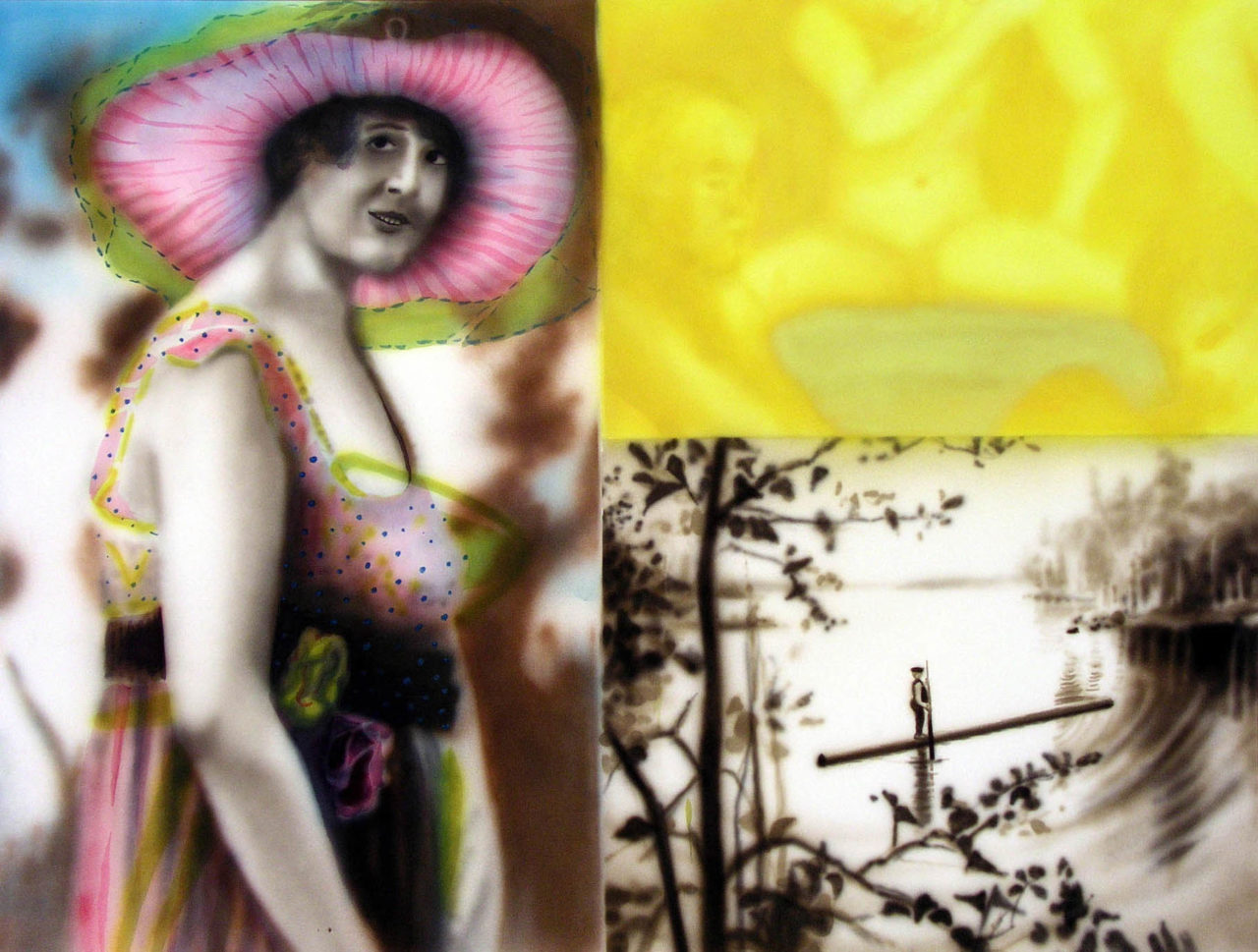
Finnish tinges
Summer story and Fresh from the sauna depict people in carefree summer settings. They tell the story of Finland: people in the sauna, muscular loggers, a lady in blossom in a pretty summer dress, a playboy and an innocent girl from an old film, moonlight swimming and a ’70s rock’n’roller in her party shoes hitchhiking in Central Finland. Throw in an open-air dance and a midsummer night bonfire and it would be a perfect Finnish summer. The paintings are harmless, mean well and are full of joy.

In The Baptism, Hytönen has given Finnishness a more sombre and sinister tinge, and allows its symbolism to evolve into its own thread of the plot. The painting shows a young lady standing by the lake, pondering her future. Railway tracks lead to the unknown, perhaps to the major transitions of life. Elsewhere, a child is being baptized after a young woman has become a mother. Or perhaps the painting is about wartime Finland? The men are away on the front and the women at home with the children. The Finnish flag is flying and the people swear allegiance to home, religion and country.
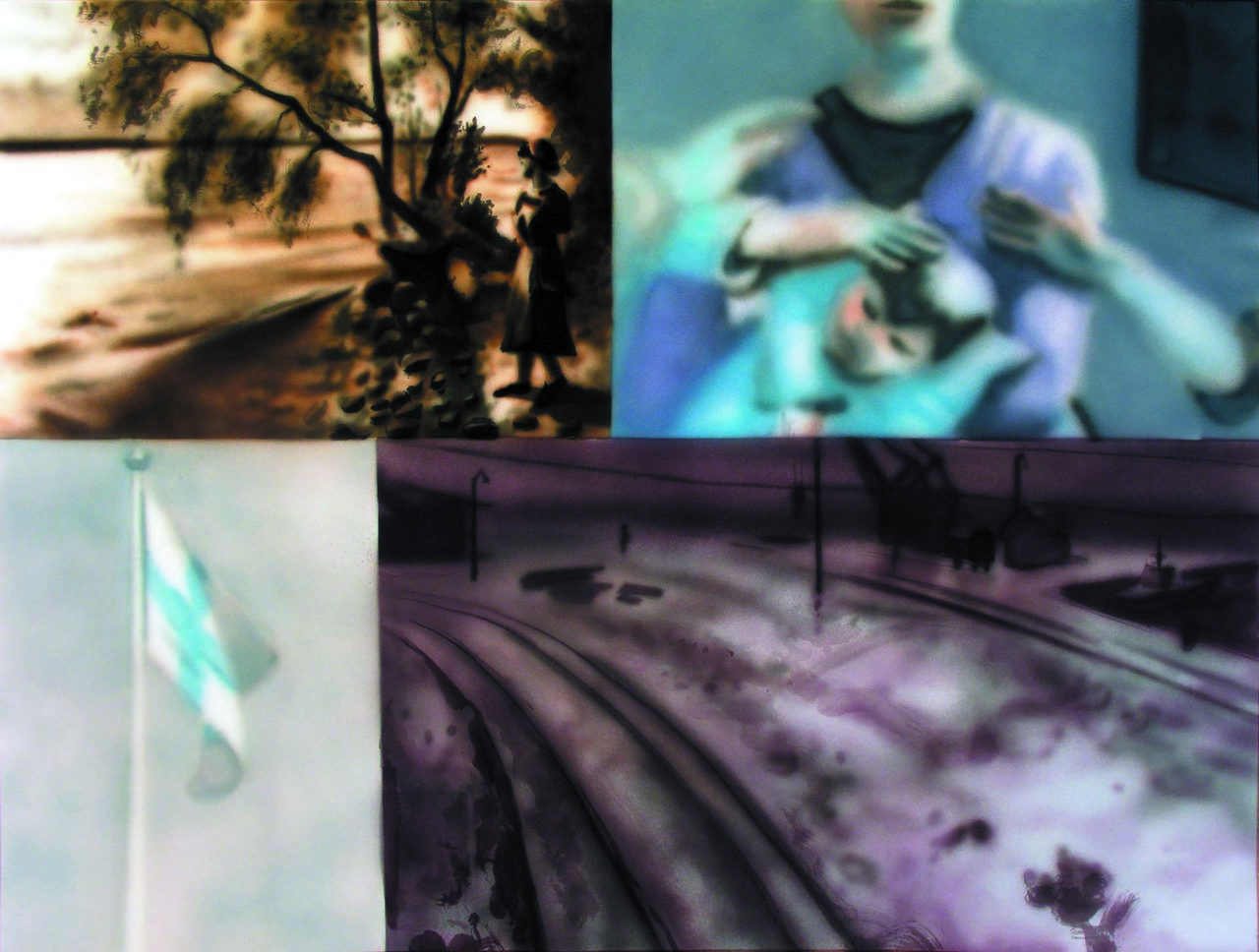
Warmth of the hearth
Do the service station and the demolished house in Daddy, drive carefully have a story to tell, especially when linked to an old picture of a mother and a child? Why not. The father is on his way home in the pitch-black night, stopping at the service station. The mother and child wait for his return, silently wishing that he ”drive carefully”. Hytönen’s painting is about the importance of home, support and security, warmth and love. It is also about the world that protects us from evil. Or does it? Does the artist see beyond what the rest of us can see, to the moment when everything may come crumbling down, leaving only ruins?
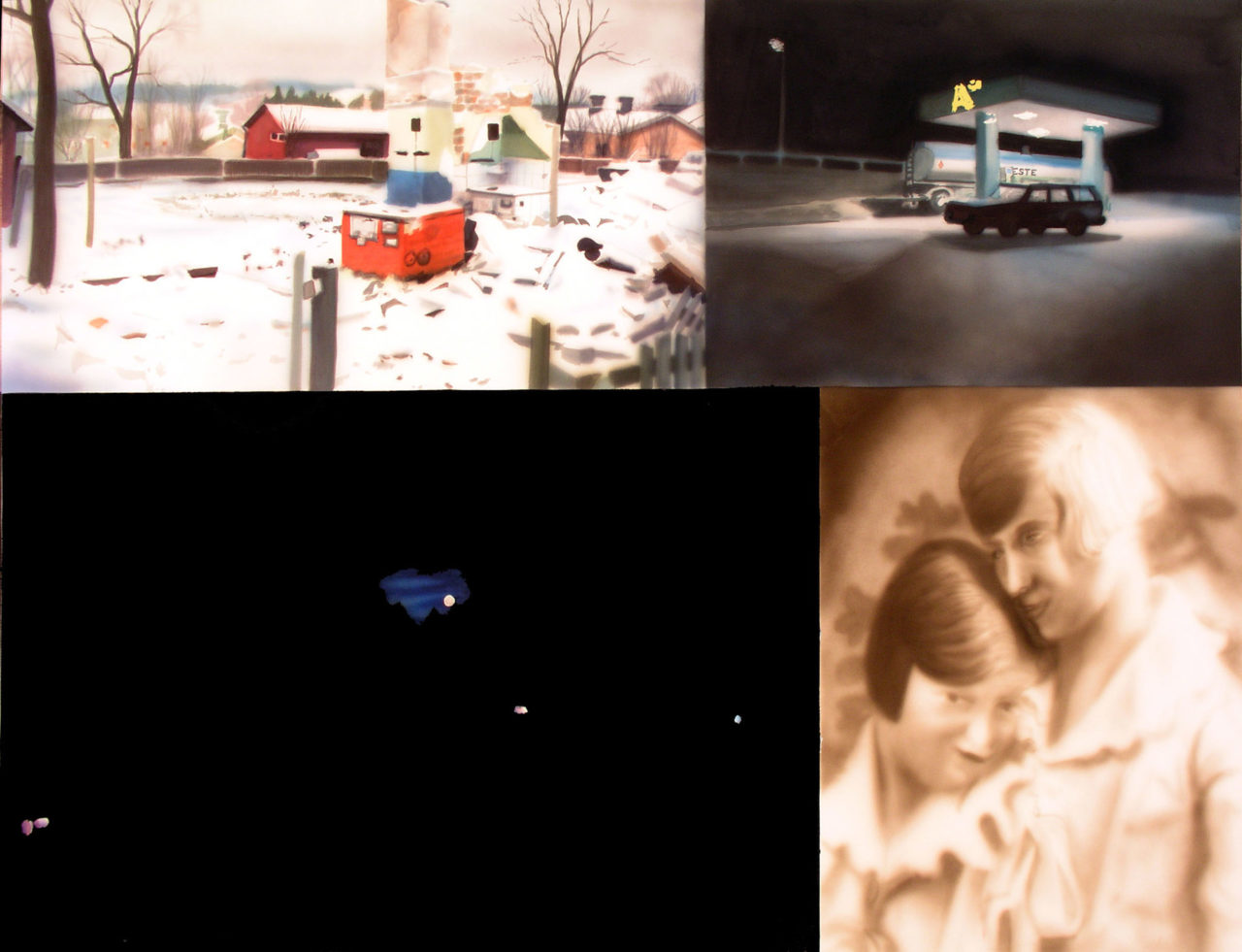
In Mother, the human being, in the present and in the world memories, is given concrete form. The painting is about the bond between child and mother and how that bond can break. It shows a young woman on a pier, basking in the sun, with time to think and reminisce. The artist’s thoughts are entered on the pages of a diary: ”Is there anything as sweet as my mother’s bosom? Soft warmth of light, cool shadow of reason. A right refuge for the heart”. The woman thinks back to her childhood, when a new member joined her family. She must have felt that her bond with her mother had come loose. But the bond is tight; some knots are never opened. A thin veil separates the worlds of adults and children, and we make the passage from one to the other time and time again.
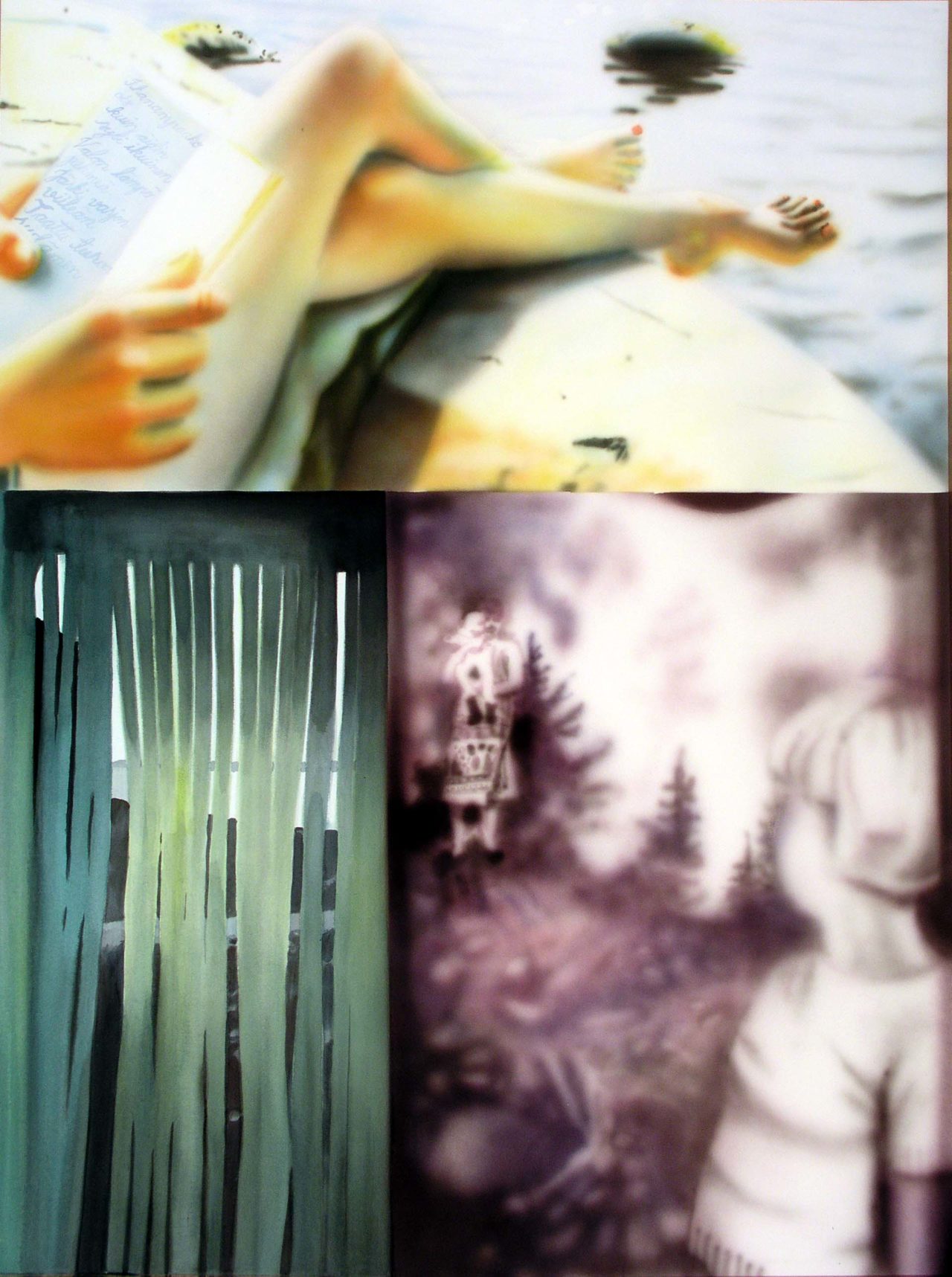
I am happy in the present
In Towards, Hytönen puts the accent on symbolism in an enchanting way. Each of its stories returns back to the title of the narrative. In each of the pictures, someone is moving toward something. A small baby stretches its hand out toward life, not knowing what it will bring with it. Ever-longer shadows follow travellers along the surface of rock heated by the sun. People walk towards the sunset. But what are they moving toward, exactly?
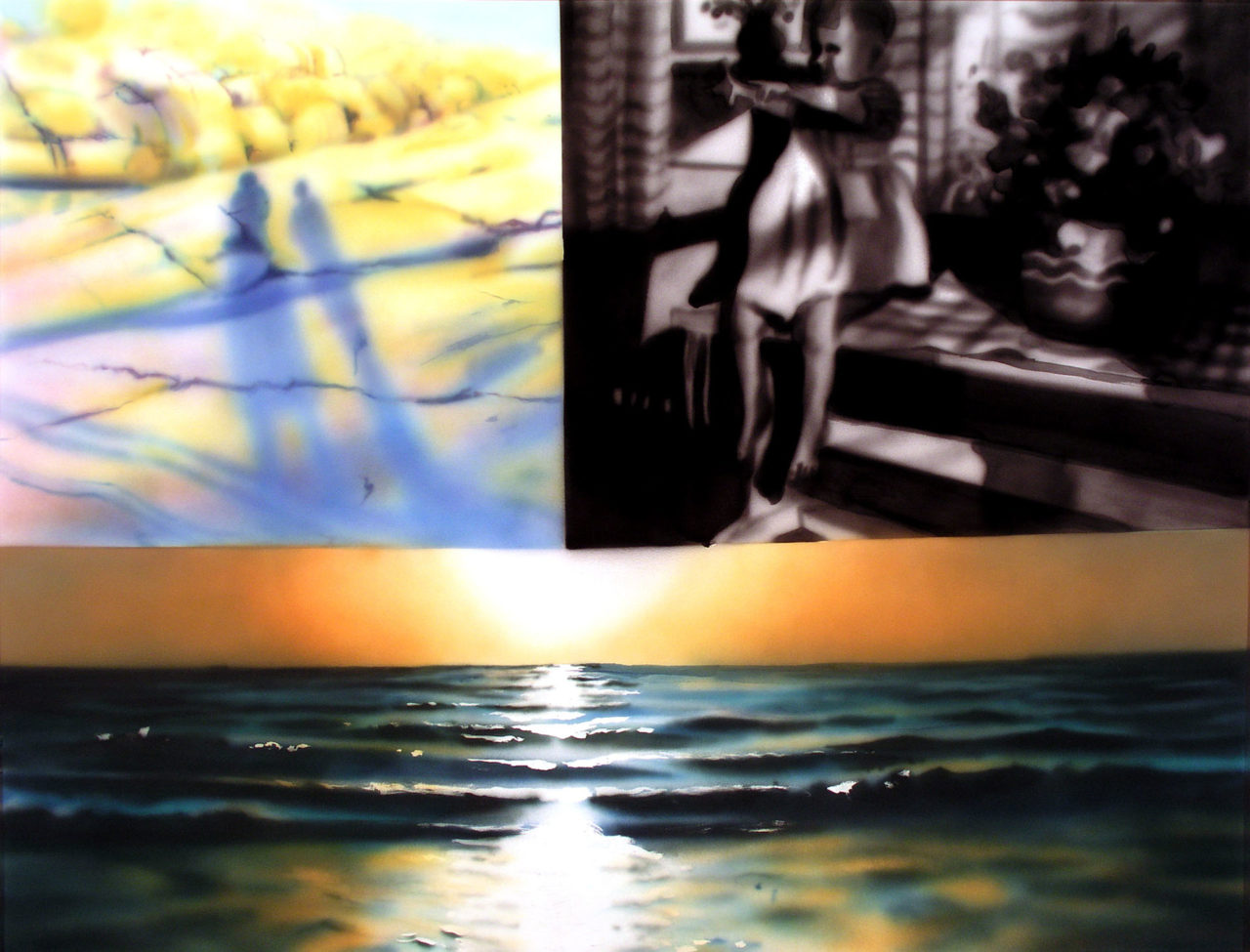
While very symbolic, Hytönen’s paintings are also rich in atmosphere. The cycles of the day and the year are strongly present. His paintings are desolate, with a stagnant and expectant mood. Natural landscapes, townscapes and people, created almost solely with different values of a single colour, transform into mindsets of the protagonists of his narratives. In Sunday afternoon, for example, he uses the freezing glow of blue as a powerful symbol of human emotion; a small-town woman takes stock of her life, feeling a cold chill.

In Moment, the artist underscores the mindset of the person, in two separate pictures. A woman playing the piano appears to be in a state of rapture from her eyes to the arc of her arm. A boy on skates glides across ice, deep in thought, his gaze locked on its smooth surface. The human being lives in the moment, not in the future or the past, and is happy.
What happens in time?
Journeys in time take place in Petri Hytönen’s works. He juxtaposes pictures of people and events of past decades with a picture of an omnipotent juggler in the era of information technology and obsessive emphasis on effectiveness. The man is tossing balls in the air –bits, zeros and ones. He is also tossing a question in the air: what is happening in the present, in this time? Where are we heading? Are we going too fast? Will we be able to control the balls?
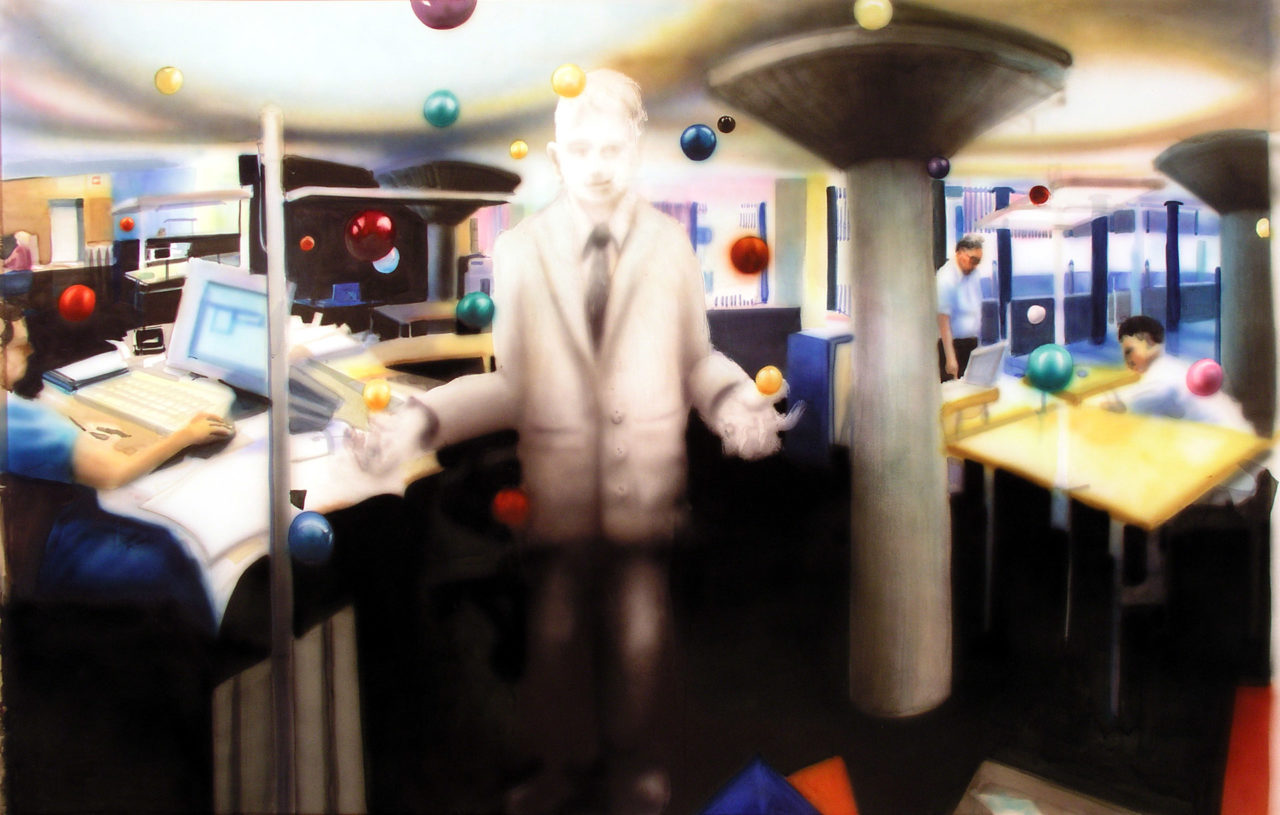
All said, Petri Hytönen’s imagery is utterly humane. His works bring out the joy of life and its gravity, too. More than anything else, Hytönen’s paintings are about the importance of human warmth and unity – and of the yearning for them. It is perhaps when we want to leave the present and its values that we embark on a journey in time.
Rauli Heino, 2003